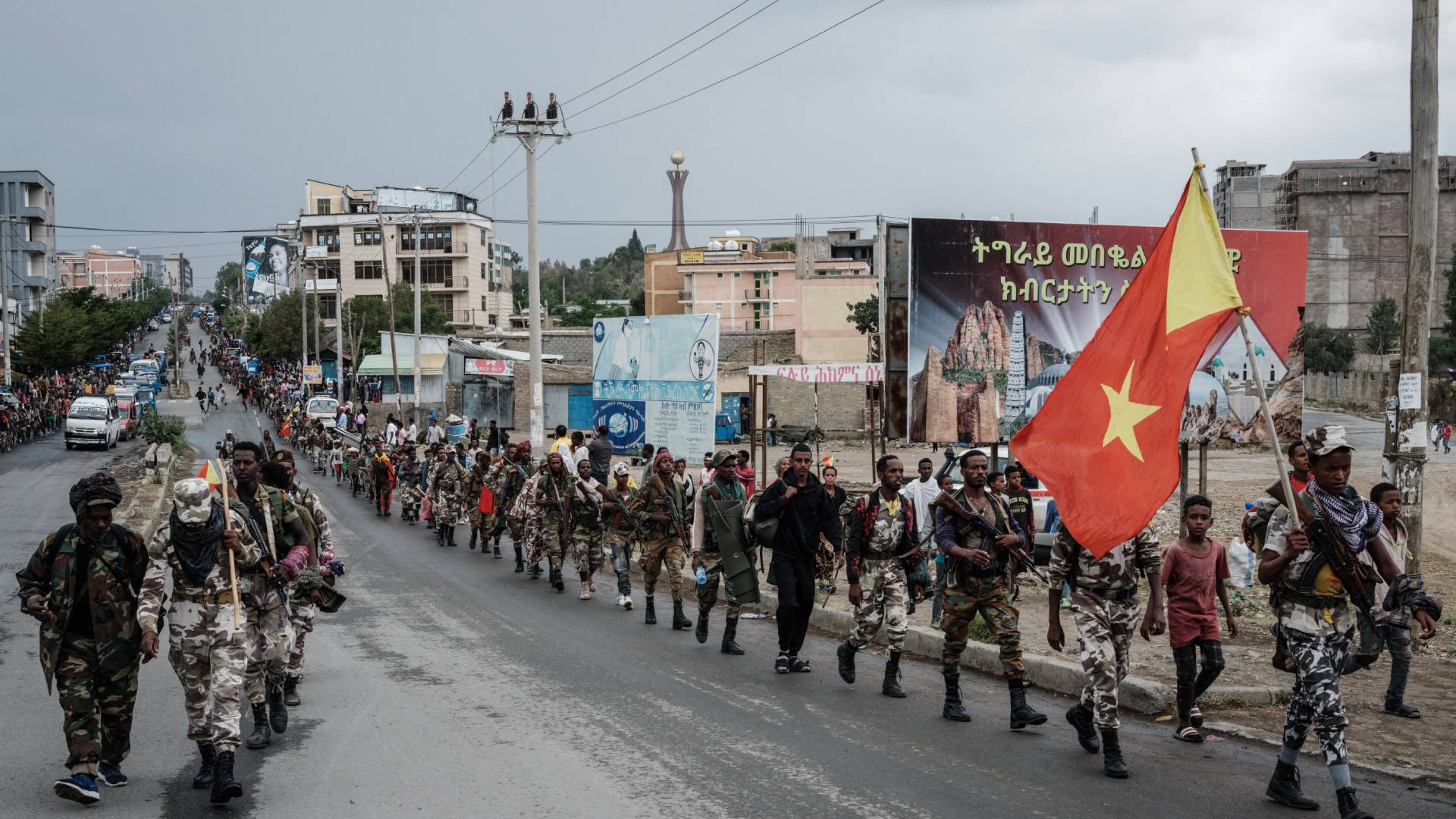TDF forces and their allies appear to be moving to encircle Addis Ababa.
This assessment was issued to clients of Dragonfly’s Security Intelligence & Analysis Service (SIAS) on 9 November 2021.
The group has advanced south along the A2 road and is now approaching Debre Berhan, 130km northeast of the capital. The TDF will probably take control of towns within reach of Addis Ababa in the coming days, including Debre Sina. Canada and the US have now ordered all non-essential embassy staff to leave. And evacuation options are likely to narrow at short notice over the coming days.
We anticipate that the TDF will try to take control of Debre Berhan, the closest major town north of the capital on the A2 road, in the next few weeks, if not before. The TDF probably believes that they are now capable of outflanking government forces in Debre Sina, the closest town north of Debre Birhan on the A2 road. And based on its recent territorial gains, the group would be unlikely to meet significant ground resistance. Air strikes are seemingly the only thing that are tangibly slowing the TDF’s southward advance.
For the first time since the outbreak of the civil war, there are signs that the government is now willing to talk with the TDF. The African Union’s mediator, Olusegun Obasanjo, reportedly met the TDF in Mekelle on 7 November. That the government allowed Mr Obasanjo to do so is a very significant development in our view. Mr Abiy most likely wants the TDF to withdraw back to Tigray before offering any concessions, however. Given the group’s military momentum, it is highly unlikely to agree to this.
Despite these signs of talks, Western governments and international organisations appear to remain concerned about the situation in Ethiopia. We understand that the UN has now banned all transit travel through Addis Ababa for its staff. The situation in the capital still seems to be fairly calm. However, with the TDF seemingly looking to continue down the A2 road and potentially cut off the A1 (a key supply route), there is a high chance that conflict will soon affect the city.
Even if the TDF does not enter the capital, we continue to assess that other crisis scenarios, such as a rapid breakdown in law and order or severe shortages of evacuation options or supplies, remain likely. In a sign that governments are also considering these, we understand that the UK government has set the fall of Debra Sina as a trigger for the drawdown of its diplomatic staff in Addis Ababa.
Below is our list of ‘red lines’, designed to help our clients anticipate the quickly moving situation and assist with evacuations or crisis planning. Those marked with stars are ones that we have already seen clear indications of.
- TDF/OLA quickly advances down the A2 road and contests government control of significant urban centres closer to the capital such as Debre Berhan*
- Very senior members of the government flee Ethiopia
- The A1 road is blocked, cutting off supplies to the capital
- Foreign governments evacuate non-essential diplomatic staff*
- Foreign governments charter evacuation flights
- Senior members of the government publicly disavow the prime minister
- Mutinies in the police or military in Addis Ababa
- Airlines other than Ethiopian Airlines (such as Qatar Airways, Saudia, EgyptAir and Turkish Airlines) cease operations into Addis Ababa
- Tickets on commercial flights from Addis Ababa are in short supply or not available
- Foreign governments advise their citizens to leave by commercial means*
- Access to Addis Ababa airport is blocked
- There are mutinies or mass desertions on the frontline in Amhara*
- Reduced security force presence around Addis Ababa*
- Ethiopian civilians flee Addis Ababa
Image: Tigray People’s Liberation Front (TPLF) fighters walk in lines towards another field in Mekele, the capital of Tigray region, Ethiopia, on June 30, 2021 (Photo by Yasuyoshi Chiba / AFP) (Photo by YASUYOSHI CHIBA/AFP via Getty Images)




